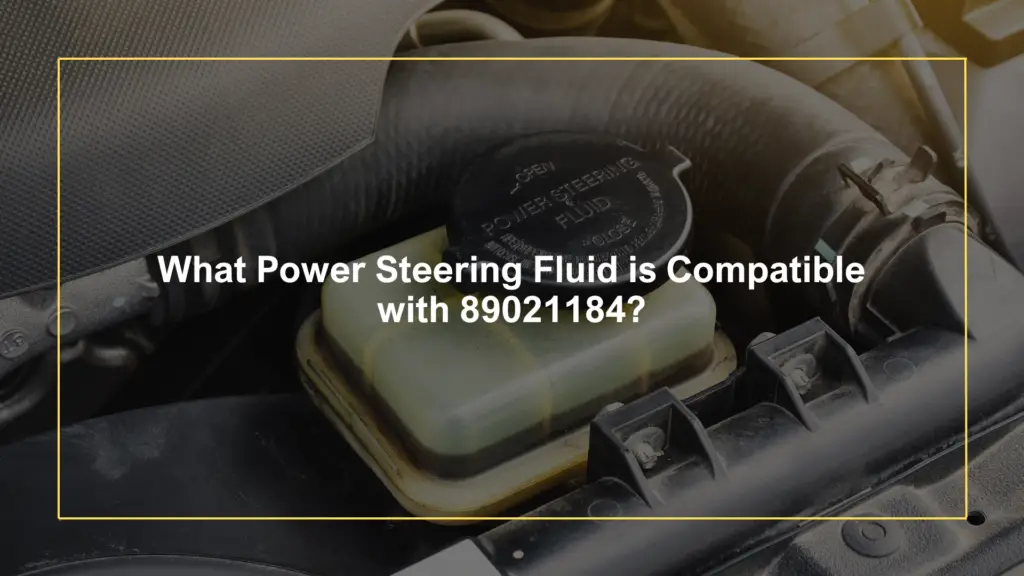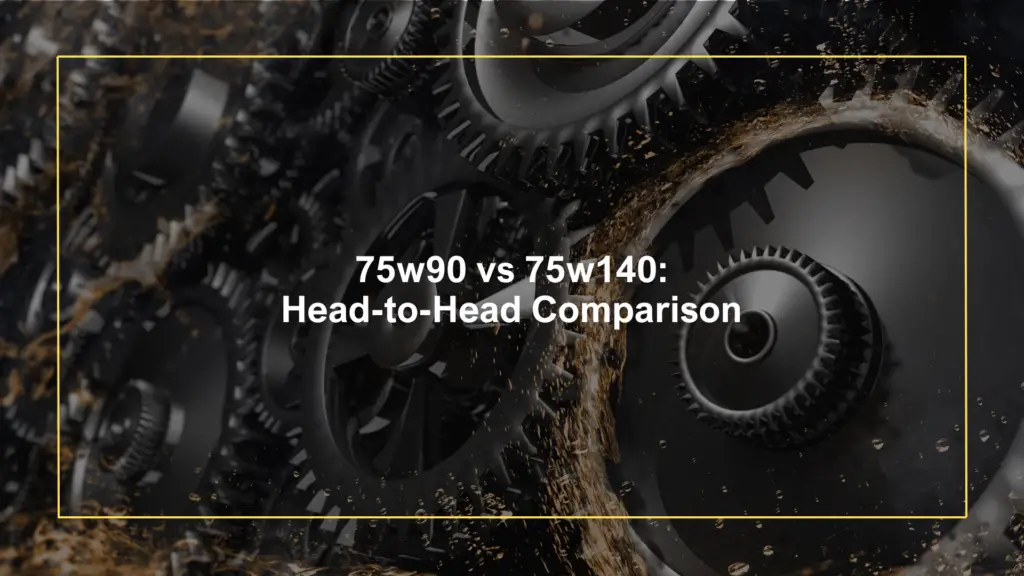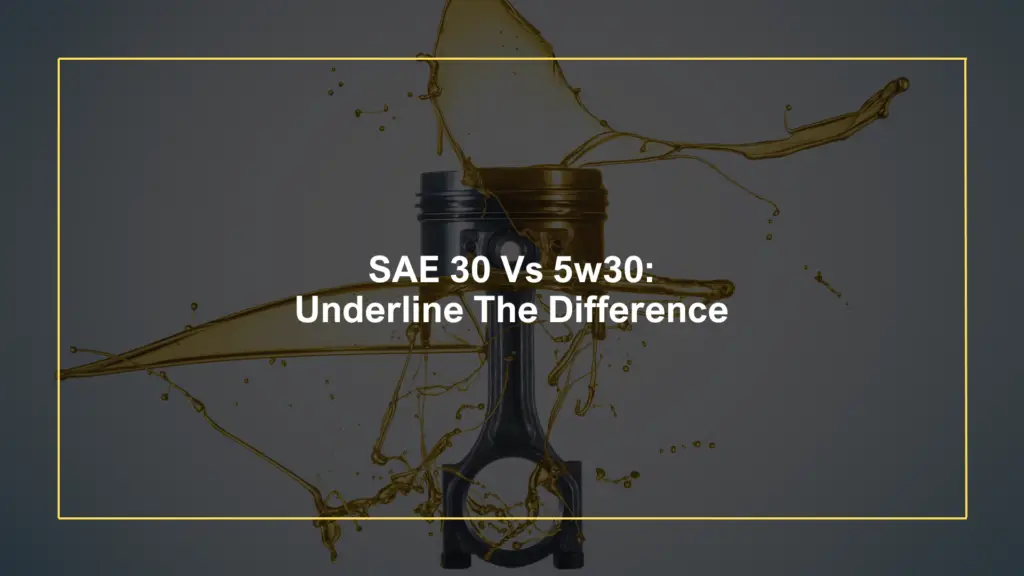Engine oil leaks are issues not to overlook. Oil leaks leave nasty greasy stains on the driveway and risk damaging the engine.
Oil leaks in the 5.3-liter engine of General Motors are common issues. There are many causes that lead to the leakage of engine oil. You need to fix them immediately to avoid severe damage to your vehicle.
The good news is that there are some problems that you can fix easily at home. However, with severe issues, you should take your car to the mechanic. This article will analyze causes and repair guides of the problem.
Causes of 5.3 Oil Leaks
Damage to Your Oil Pan and Pan Gasket
The oil pan gasket does a critical job of tightly sealing the pan beneath the engine. But it’s sporadic for the pan gasket to wear out and cause leakage. So if the oil pan or the oil pan gasket experiences severe damage, the oil leaks through them to the driveway or ground.
How to Detect
If you notice some oil leakages due to damage to your oil pan gasket, you can associate it with the following symptoms:
- Oil leak beneath the engine: This is the most common sign that you must diagnose. The oil pan gasket’s construction material always deteriorates with time due to heat; hence, it leaks, leaving drops of oil below the engine.
- Overheating: The oil keeps your engine extremely cool. So if the oil leaks out, there’ll not be enough oil to cool down and lubricate the engine components. The oil pan gasket leaks cause the engine to overheat, leading to severe damage if you don’t fix it.
- Low oil level: Sometimes, it’s challenging to detect the oil leaks from the pan gasket. You can only see the damage to the oil pan gasket if your oil level is lower than usual. The warning light on your dashboard illuminates to signal you.
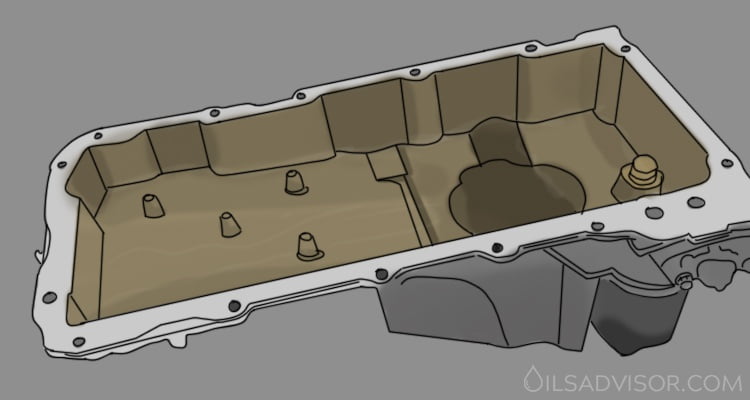
How to Fix
There are two ways to fix these problems:
- Replace with the new gasket or new oil pan: If the oil pan gasket or oil pan is broken, you need to replace it immediately to maintain the actual oil levels and reduce overheating.
- Use gasket sealer: If the pan gasket has minor leaks, you can try sealing the leaks using the gasket sealer.
See also: Chevy/ GMC 5.3 Oil Capacity & Oil Type
Degraded Engine Valve Cover Gasket
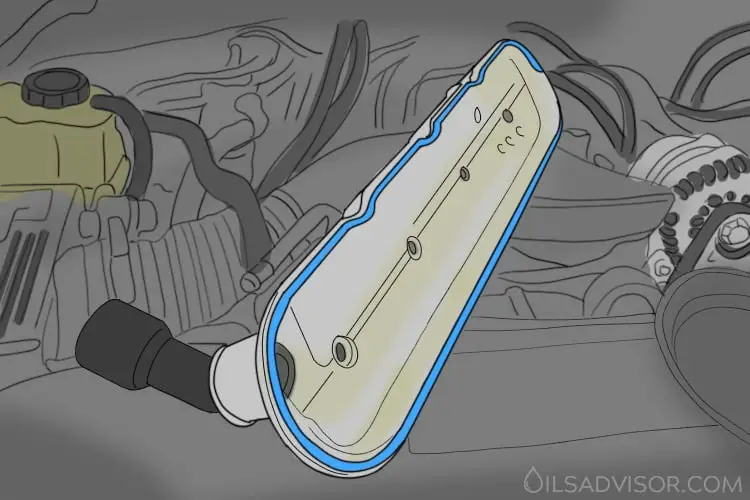
One of the leading causes of leaks is worn-out engine gaskets. It’s a seal joining various engine components tightly to ensure a free flow of oil with no vacuum leak. The creation of sludge by oil and increased pressure is a danger to the gasket.
Valve covers are made of silicone rubber to fit correctly. However, the rubber wears out with time to form cracks, causing the oil to leak, limiting the lubrication of the engine parts.
How to Detect
- Smoke emanating from the engine: It might be because of degraded engine gaskets. If you notice some smoke coming out of the engine components, the gasket is defective.
- Dirty valve cover: Pay close attention to the valve cover when changing the oil. If the valve is dirty, it’s possible the oil leaks from the valve cover gasket.
- Burning Smell: Valve cover shields tightly compressed oil that’s yearning to get out. A slight crack in the valve cover gasket causes profuse oil leakage on the engine components.
How to Fix to
To fix a degraded gasket, use a strong additive that stops the leakage. Another way to fix it is to replace it with a new one. Note that if you are not mechanical savvy, you can take your vehicle to the service shop as this requires advanced skills to do. If you want to handle the problem yourself, follow the DIY simple steps to change the engine gasket:
Step 1: Remove the car battery and all the components connected to the exhaust pipe.
Step 2: Remove the engine cover, timing belt, exhaust pipe, and valve cover from the cylinder head. Unplug the cylinder head and use aerosol or scraper to clean it and other surfaces connecting the engine.
Step 3: Mount the new gasket and ensure it’s in the correct position and fits tightly on the engine block. Re-install cylinder head, timing belts, valve cover, and other parts in their proper place.
Bad Oil Filter
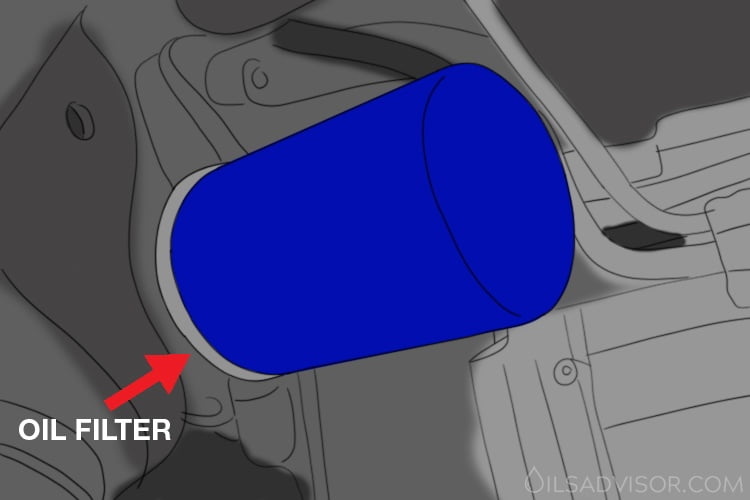
Oil filter is one of the most vital and delicate components of your engine. The filter eradicates dirt in the oil for proper lubrication in the machine. A bad oil filter can cause oil leakage, especially if it’s not tight enough. If you detect some oil build-up on your oil filter, then conclude that’s the source of the oil leaks.
How to Detect
- Overheating: If dirt clogs the filter, it becomes hard for oil to enter the engine inhibiting proper lubrication. This eventually leads to overheating, so the engine light illuminates.
- Metallic noises: While driving, if you hear the irritating noise of metallic parts grinding against each other; the problem is a bad oil filter. The clogging of the filter reduces lubrication and increases friction.
- Low pressure: If the oil filter is clogged, oil cannot flow freely into the engine, causing a significant drop in oil pressure as you drive. The pressure gauge in the dashboard regulates the oil pressure in your car.
- Dirty oil fumes: A bad oil filter causes oil flow from the exhaust and burns up. This leads to the emission of dirty fumes from the exhaust system.
How to Fix
There are two ways to fix this problem: using clean oil in your engine and replacing the filter with a new one. You need to be proactive during the replacement and follow the steps below:
Step 1: Drive for about ten minutes to warm up your vehicle and park it on a flat surface. Open the bonnet and access the oil filter.
Step 2: Remove the connected pipes, jack up your vehicle, and place a pan below the drain plug to collect oil. After removing the old oil, replace the plug and lower your car.
Step 3: Use gloves to remove the lousy oil filter and lubricate the new one. Jack up your vehicle again and remove dirt that accumulates in the drainage hole. Install the new drain plug with an engine gasket.
Step 4: Pour clean oil up to the highest point of the dipstick and seal it tightly with a filler cap. Let the engine run for about 15 minutes for proper oil circulation. Recheck the oil level using the dipstick; if it’s enough, then the replacement of the filter was adequate.
See also: Purolator Oil Filter Review
A Failure Oil Drain Plug

A faulty oil drain plug can cause invisible droplets on the driveway and low oil levels in the engine. You don’t want it to fail you by pouring out your oil, causing severe damage to the engine. You need to address this issue immediately after you notice it.
How to Detect
Oil leaks can cause nasty stains in the driveway. However, you can detect a failure oil drain plug through the following symptoms:
- Low oil level: Use the dipstick to check the oil level to avoid any problems that may affect your engine. If you notice the oil level is deficient, it means your drain plug is faulty.
- Overheating: This condition is associated with a failure oil drain plug. When the plugs are damaged, the oil levels drop drastically, causing the engine to overheat.
- Dirty oil: If you find the oil is dirty, it’s a sign that the oil drain plug is leaking. This is because of impurities it’s collecting on the driveway while the engine is pumping. Always check the color of the engine oil to ensure it’s dark gold.
How to Fix
Follow the step-by-step guide to fix your damaged oil drain plug:
Step 1: Jack up the front part of your vehicle to access the oil drain plug and align the oil pan below it to prevent further leakage. Use the adjustable wrench to unplug it and remove it to allow the oil to drain out completely.
Step 2: Use a screw to tighten the oil drain plug against the oil pan. Remember not to over-tighten it, instead carefully snug it up.
Step 3: Once again, remove the plug and examine all its threads. If you notice it is smooth, or non-existent, it’s damaged, and you need to replace it promptly and screw it tight enough into the hole.
Hoses and Oil Lines
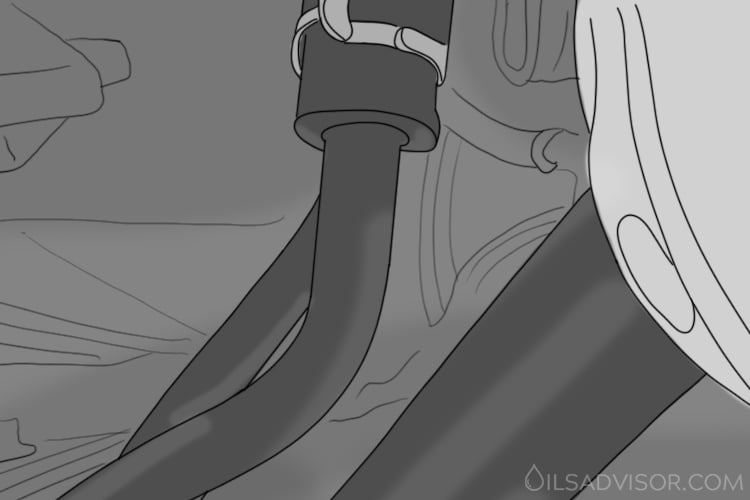
The turbocharged engine enables your car to get greater horsepower and improve fuel economy. Turbo systems are incredibly vital and pretty complicated. So, for them to function effectively, their internal parts require proper lubrication.
The hoses and oil lines provide the turbo system with enough oil. The hose is durable because it’s made of metal and rubber. However, many things can damage the oil lines and hoses, especially extreme heat from the overheating engine.
How to Detect
If you take your time to inspect the hose and oil lines regularly, you can detect repair issues and reduce damage to the engine. Some symptoms to look out for include:
- Crack on the rubber hose: The crack on the rubber hose is one of the noticeable symptoms. The oil lines take a lot of dirt that the engine produces, irrespective of the conditions. This causes the hose to crack, and the solution is to replace it.
- Swollen spots: If you notice some bumps on the hose, you need to act quickly and replace them. The heat from the engine and high pressure create bulging spots.
- Failure of the O-ring: Most of the hoses seal the mounting location of the oil lines using the O-rings. However, with time, they become brittle and dry out causing oil leakage.
How to Fix
Fixing the hoses and oil lines is a pretty simple task, and you can do it yourself. However, these steps require special tools. So if you are not sure how to do it, you can take your vehicle to the nearest service shop.
- Identify the damaged hose: Different hoses have different minimal pressure ratings. So you need to identify the correct specifications of the hose that needs repairing. One slight mistake can cause severe damage.
- Cut out the damaged part: After identifying the damaged part, remove it and clean the dirt to avoid damaging internal components of the engine. You can use the hydraulic adapter to complete the reinstallation and connection of the new hose with the pumps, pipes, and valves.
- Check the right length: Place the hose in its position and check if its size is enough for proper routing to enable the hydraulic and turbo system to work effectively.
- Seal the hose properly: Create a seal at the end of the hose using a wrench but don’t over-tighten it. Finally, start the engine and let the oil circulate as you check for any leakages.
What Happens If You Don’t Fix An Oil Leak for Your 5.3
Oil leak for 5.3-liter vehicles is not an issue to overlook; fixing them should be your top priority. Your vehicle requires oil for proper lubrication to improve the performance of the engine and its components. So what can happen if you don’t fix the issues mentioned above:
- If you don’t solve the oil leak problem, your vehicle can run out of oil and overheat due to insufficient lubrication in the engine; thus, affecting it because of wear and tear.
- The rubber hoses and seals will degrade prematurely, leaving dirty oil stains along the driveway. The engine may also fail and lead to fire-outbreak in the bay.
- Oil leakages leave stains and create slippery surfaces on the garage, roads, etc. It also causes environmental hazards, which are highly dangerous to plants and animals.
- If you don’t fix the oil leak issue, it can drain your finances. Remember that modern engine oils are relatively expensive.
How To Prevent Future Leak For GM 5.3
Oil maintenance is one of the most fundamental routine tasks that you need to embrace for the sake of your car. The engine oil is vital for your vehicle’s health. Here are the things you need to do to prevent future leaks for GM 5.3:
- Change filter and oil regularly: One perfect way to prevent future leaks is by changing the oil regularly. In addition, you need to change the oil filter to prevent clogging.
- Use the right type of oil: Ensure you are using oil only meant for your engine. Get assistance from the user’s manual for proper oil recommendations.
- Conduct routine checks: Oil leaks can affect your car adversely. So you need to conduct constant maintenance checks to monitor your engine’s overall health.
- Don’t Overfill: During your routine oil change, always maintain a recommended oil level to prevent further leakage.
See also: Bubbles In Transmission Fluid: Causes & Repair Guide
Conclusion
As you can see, oil leakage is an issue that you should take seriously because it’s a sign that the engine is not functioning effectively. We have highlighted the 5.3 common oil leaks you should be aware of such as a bad oil filter, a failure in the oil drain plug, etc. So the first thing to do is to diagnose the cause of the oil leak.
Read the steps carefully and implement them to solve the leakage issues to avoid overspending during maintenance. Overall, you can seek the expertise of your mechanic to improve the performance of your GM 5.3 3 engine.
If you’ve ever experienced this problem with your 5.3 engine, could you share with us?
Related Reads
- Low Oil Pressure At Idle: Causes & Repair Guide Learn how low oil pressure can indicate potential oil leaks in a 5.3 engine and how to address them – Learn more.
- Marvel Mystery Oil Review Discover how using Marvel Mystery Oil can help maintain your engine and prevent common oil leaks in a 5.3 engine – Find out more.
- Best Oil for 6.0L Powerstroke Compare the best oils for a 6.0L Powerstroke with those for a 5.3 engine to prevent leaks and ensure optimal performance – Explore here.
- Reducing Oil Consumption for Catalytic Converter Efficiency Learn strategies to reduce oil consumption and prevent leaks that can affect catalytic converter efficiency in a 5.3 engine – Discover now.
